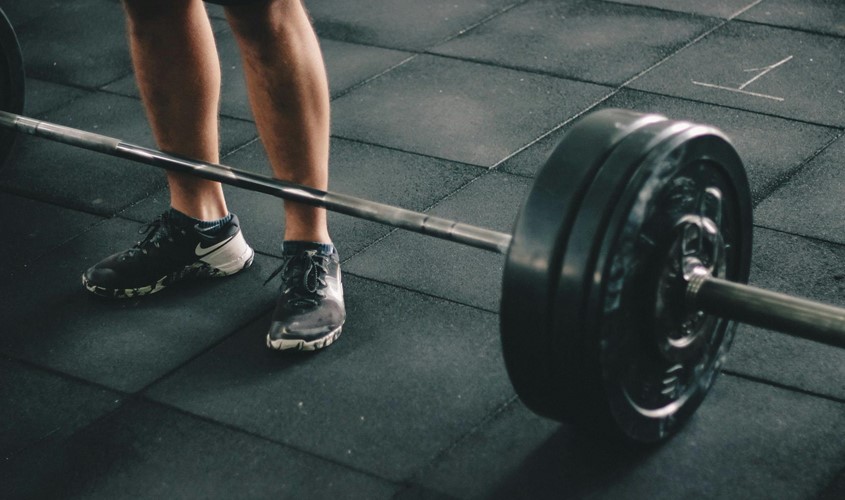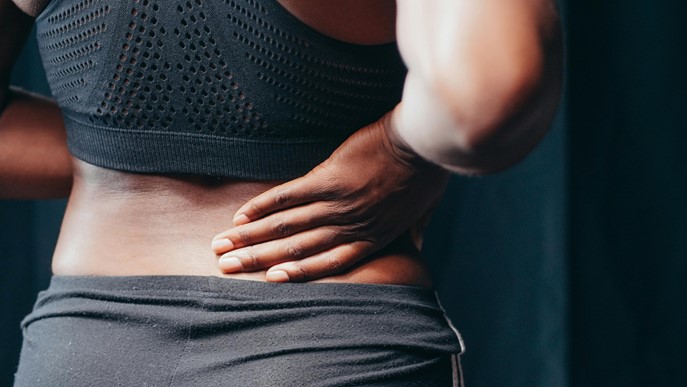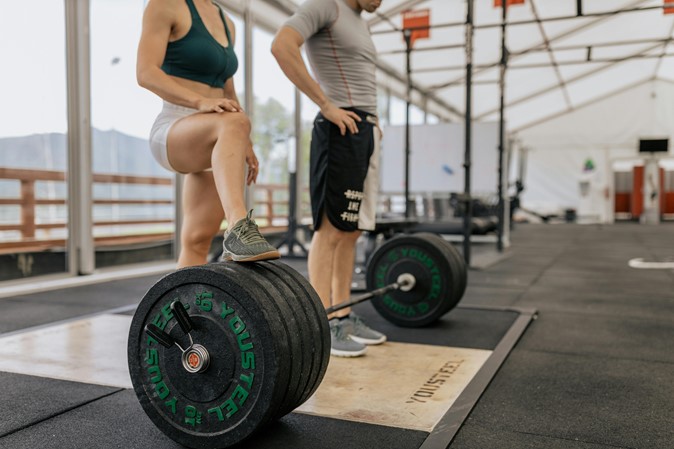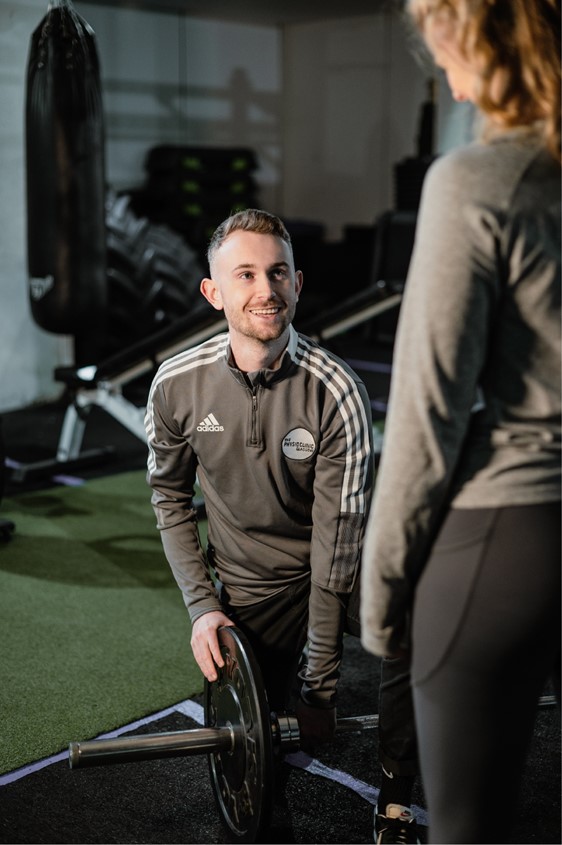How Deadlifts Can Help Your Back Pain
Published: 18 January 2024

How Deadlifts Can Help Alleviate Lower Back Pain (According to Physiotherapists)
Lower back pain affects up to 80% of adults at some point in their lifetime. If you’re one of these sufferers, certain exercises like deadlifts may seem too risky. However, the latest research shows that when programmed correctly, deadlifts and other compound lifts can actually relieve back pain symptoms rather than exacerbate them.
As physiotherapists at The Physio Clinic Glasgow, we often prescribe deadlifts alongside other strength training exercises, mobility work, and manual therapy to help patients recover from back injuries and persistent pain.
In this guide, we’ll explain the evidence-based benefits of using deadlifts to alleviate lower back pain when performed with proper form and gradual loading under the guidance of a physiotherapist or coach.
How Can Deadlifts Help Relieve Lower Back Pain?
Many people with back pain avoid compound exercises like deadlifts in fear that heavier loading will overload the spine. However, this outdated mode of thinking contributes to collateral issues like fear avoidance and weak glutes, hamstrings, and back extensor muscles.
As a multi-joint exercise, deadlifts train coordination between the hips and spine while strengthening the entire posterior chain – the muscles running down the back of the body.
When programmed thoughtfully by a physiotherapist, deadlifts can reinforce full range of motion, improve stability, build the the surrounding musculature, and provide a host of other benefits to gently alleviate back pain over time.

Let’s analyse the key evidence-based mechanisms that allow deadlifts to effectively treat back injuries.
#1: Deadlifts Strengthen The Back & Core Muscles
Research overwhelmingly shows that weak back/postural muscles contribute to low back pain with a recent study having found that back extensor muscles were significantly weaker in patients with chronic lower back pain. Strengthening exercises reduced symptoms by helping to support the loaded spine.
Another study confirmed deadlifts engage the erector spinae muscles running along the spine more than many other back exercises.
By directly targeting back strength, deadlifts improve the resilience of the spine and surrounding tissue to external loads, improves neuromodulation (calming the ‘pain signals down’, and build patient’s confidence in moving their back ‘normally’.
This makes deadlifts an excellent exercise for treating back injuries when prescribed by a physiotherapist alongside stabilization exercises that target smaller intrinsic trunk and core muscles.
#2: Deadlifts Reinforce Back Structures for Functional Demands
Many back pain sufferers struggle with daily activities like lifting, bending, and reaching due to poor movement habits that overload specific structures. Deadlifts train the back muscles and connective tissues to handle multi-plane demands that mirror real-life functionality.
Rather than isolation, deadlifts involve hinging, pushing the hips back, and resisting rotation along all three movement planes. This engages and interconnects the back musculature in an integrated fashion that supports the vertebral joints and spinal segments from shear and torque forces.
By conditioning structures to work synergistically in this manner, deadlifts prepare the neuromuscular system for more randomness involved with household chores, playing with kids, or unplanned loading events.
Unlike a back extension machine, deadlifts teach integrated rather than isolated capacity to share demands. The thoracic and lumbar tissues adapt to multi-angle challenges like lifting asymmetric objects.
Over time, the back learns to stabilize and move as a cohesive unit with enhanced durability against randomness. Individuals lift heavier real-world items with greater ease thanks to improved structural integrity from deadlifts.
Rather than "perfect posture", deadlifts promote back resilience by exposing the muscles, connective tissues, and interfaces to purposeful disorganization within safe parameters - this fortifies every structure for functionality.
#3. Deadlifts Address Muscular Tightness
Limited mobility in areas like the hips and calves often results from a neuromuscular tightness response to overloaded, weak tissues rather than purely mechanical issues. The muscles tighten to temporarily stabilize joints.
This dynamic stabilization can strain associated tissues by necessitating compensation like excessive spinal motion when bending - contributing to back injury risk.
As a compound lift involving major muscle groups, deadlifts strengthen connective chains. The hamstrings, glutes and calves become more resilient through fuller loading exposure during training.
In one study, deadlifts markedly enhanced ankle and hip mobility - allowing greater range of motion thanks to increased muscular durability through the movement planes.
With weak links fortified, the nervous system trusts the surrounding tissues to handle demands, reducing reliance on makeshift joint stability from muscular tension.
Over time, deadlifts relieve excessive tightness by distributing force through stronger structures and improving resilience. This alleviates strain from overdependent muscles previously forced to safeguard movement.
The downstream effect is fluidity once rigid areas – decreased tightness translates to effortlessness bending down or stepping up stairs as the tissues cooperatively share demands.
In summary, multiple high-quality investigations confirm deadlifts effectively strengthen the back muscles, reinforce normal spine mechanics under load, address regulation of our neuromuscular system, and improve mobility when performed correctly under guidance.
This makes them an excellent evidence-based exercise in the physiotherapist’s toolkit for alleviating lower back injuries alongside other interventions like manual therapy and complimentary strength and mobility exercises.

Myths Surrounding Deadlifts For Back Pain Relief
Despite compelling evidence on the benefits of deadlifts for treating back pain when professionally coached, harmful myths persist.
The most common misconceptions include:
Myth #1: Deadlifts Are Bad For The Back
As explained, deadlifts train safe spine mechanics when done properly. Poor form leads to injury, not the exercise itself.
With expert guidance on achieving proper positioning, deadlifts actually reinforce healthy postures (no such thing as perfect) and movement habits that support the back.
Myth #2: Individuals With Back Pain Should Avoid Deadlifts & Weight Training
The concept that back pain sufferers cannot safely lift weights is outdated and counterproductive.
In fact, research shows strength training including deadlifts with light weights below 60% 1RM combined with mobility work helps alleviate back pain over time by correcting muscle imbalances.
Myth #3: Individuals Should Avoid Exercise During Acute Back Pain Flare-Ups
Many patients believe they should completely rest and avoid movement during an acute back pain flare-up out of concern for making injuries worse. However, this outdated mode of thinking often prolongs recovery.
In most cases, continuing gentle movement like walking, along with modified deadlifts and other exercises scaled back during flair ups facilitates centralization of symptoms and recovery from strains or sprains.
Complete rest beyond a day or two risks declining capacity, muscle imbalances, and chronicity over time. Light activity signals tissues to aid the recovery process.
By proactively working with physiotherapists to determine appropriate exercise modifications rather than defaulting to total rest, patients can safely progress despite sporadic increased symptoms.
This prevents losing progress by maintaining strength and mobility as able based on real-time monitoring and adjustments from specialists.
How To Safely Use Deadlifts For Lower Back Pain Recovery
Now that we’ve established the scientific case for using deadlifts as an evidence-based exercise for lower back pain, let’s discuss strategies physiotherapists employ to safely prescribe them alongside established interventions:
#1: Seek Individualized Guidance From A Physiotherapist or Specialist Coach.
While compelling research confirms therapeutic benefits, every back pain case has unique considerations requiring an individualized approach.
Seeking guidance from a qualified physiotherapist or coach with experience designing exercise programs for back pain ensures you correctly perform deadlifts scaled to your condition.
An initial assessment including subjective and objective aspects will help to build up a full picture of your back pain and how it affects your daily life. This will also help to rule out any serious pathology which is very rare for the majority of back pain patients (phew!).
Ongoing assessments track progress so the specialist progressively increases demands and removes modifications over time as you improve.
#2: Build Movement Capacity Progressively
For individuals new to training or those experiencing acute back pain flare-ups, jumping straight into heavy compound lifts often proves counterproductive. Instead, physiotherapists focus first on re-establishing capacity in isolated patterns that mirror components of more complex movements.
This allows patients to demonstrate pain-free control of individual movement pillars like hip hinge activation or spinal extension endurance without overloading structures prematurely. As capacity improves over subsequent weeks, the specialist then combines patterns to evolve towards multi-joint lifts.
For example, exercises like Romanian deadlifts, glute bridges, and skydivers respectively help patients reconnect with hinging, hip extension, and back extension as building blocks before layering these elements together into full deadlift training.
There is no universal perfect set of preparatory exercises. Rather than blanket stabilization recommendations, your physiotherapist personalizes and progresses exercises based on your unique presentation to showcase incremental capacity gains over time before incorporating deadlifts.
The key is avoiding assumptions related to existing strength or mobility. Taking a gradual approach lays an appropriate foundation to then optimize deadlift form and loading as the last layer towards functional fitness rather than the first step.
#3 Follow A Gradual Progression Model Under Guidance
Attempting to lift too heavy too soon markedly increases injury risk.
Physiotherapists carefully scale the magnitude of loading and volume based on your current capacity and gradually progress over time.
Upon clearing deadlift exercise, they typically prescribe lighter loads with higher repetitions to reinforce technique – focusing on quality over loading plates from the onset.
After confirming pain-free movement quality, the weight slowly increases based on proportional gains in muscle capacity while regularly reassessing and modifying programming as needed.

Patience is essential – especially for beginners and those recovering from injuries. Attempting personal records routinely results in preventable setbacks. Respecting gradual loading guidelines from your physiotherapist facilitates sustainable, long-term back strength development.
We hope this guide has dispelled common training myths to demonstrate why appropriately programmed deadlifts can aid back pain relief alongside other therapies when guided by a physiotherapist.
If you suffer from persistent or worsening lower back pain, we encourage you to book a consultation with our specialist team at The Physio Clinic Glasgow to explore customized exercise and treatment solutions.
Our goal is to help patients build sustainable strength over time while alleviating pain - we'd love to work with you towards living life to the fullest.